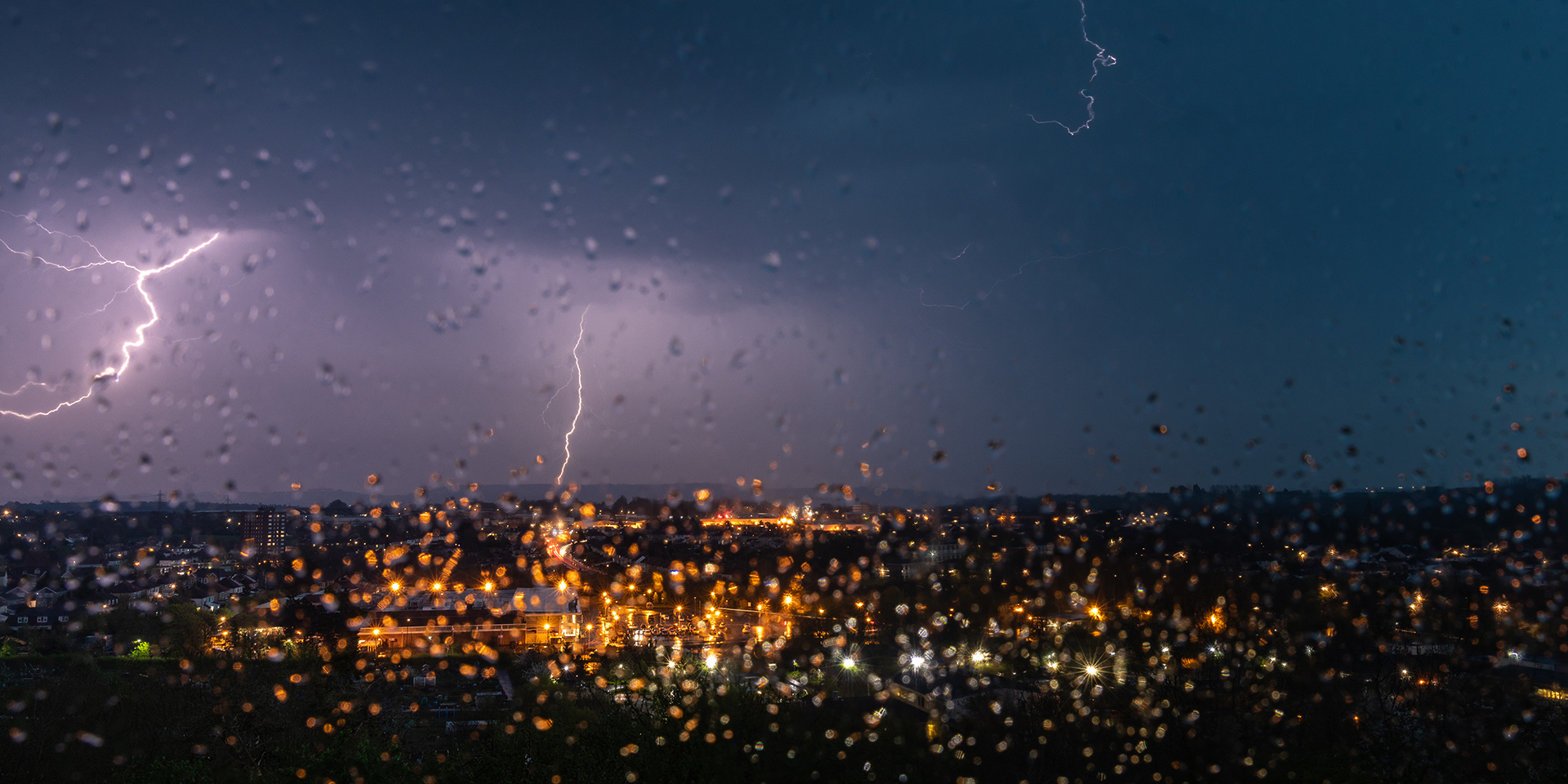Will UK thunderstorms become more extreme as our climate changes?
With a number of states in the US currently experiencing severe thunderstorms, could we see similarly intense weather here in the UK too?
As the UK heads into the warmer months, the likelihood of thunderstorms increases. While these dramatic weather events can be incredible to watch, they also bring a range of hazards, such as lightning strikes, flash flooding, power outages, and travel disruption.
In this article, we'll look at what causes thunder and lightning, how climate change may influence future storms in the UK, and what you can do to stay safe when they occur.
What are thunderstorms?
Thunderstorms form when warm, moist air rises rapidly into cooler air above, creating instability in the atmosphere. This process leads to the formation of cumulonimbus clouds, towering, dense clouds capable of producing heavy rain, hail, and lightning. Lightning is a massive electrical discharge caused by the separation of positive and negative charges within a storm cloud.
As the storm develops, ice particles and hailstones collide, transferring electrons and creating a charge imbalance. When the difference becomes too great, the energy is released in a flash of lightning, either within the cloud, between clouds, or from cloud to ground. The rapid heating of air around the lightning channel (up to 30,000°C, a whopping five times hotter than the surface of the sun!) causes it to expand explosively. This expansion creates the shockwave we hear as thunder.
While the UK doesn’t experience the same frequency or intensity of thunderstorms as some parts of the world, they are not uncommon, particularly in the East Midlands and southeast England. On average, the UK sees around 200,000 to 300,000 lightning strikes each year. Thunderstorms are most likely during the summer months, when warm surface temperatures and humid air create ideal conditions for storm development. However, they can occur at any time of year.
READ MORE: What is thundersnow?
How will climate change affect UK storms?
As our climate changes, the UK is expected to experience warmer, wetter winters and hotter, drier summers. However, with these changes comes an increased likelihood of more intense and frequent extreme weather events, including thunderstorms. One contributing factor is the potential for more frequent “Spanish plume” events. These occur when hot air from the Iberian Peninsula moves northwards into the UK, creating unstable conditions that can lead to intense summer thunderstorms with heavy downpours and lightning. While the UK’s weather will remain variable, climate change is likely to increase the intensity of some weather types. This means that while we may not see more thunderstorms overall, the ones we do experience could be more impactful.
READ MORE: Learn about thunder, lightning, and other types of weather
Staying safe in a thunderstorm
Thunderstorms can develop quickly and bring a range of hazards. There are several practical steps you can take to stay safe. Before the storm, check the forecast and stay informed by monitoring Met Office weather warnings and updates. Unplug non-essential electronics to protect them from power surges, and secure outdoor items like garden furniture and bins that could be blown around by strong winds.
During the storm, seek shelter indoors or in a car with a metal roof. If you hear thunder, you’re already within range of a lightning strike. Avoid using plumbing, landline phones, or touching metal objects. If you’re caught outside with no shelter, crouch low with your feet together and hands over your ears, however, don’t lie flat on the ground. After the storm, be cautious of downed power lines and report them to authorities. Check your property for damage and avoid touching any exposed wiring. If safe to do so, check on neighbours, especially those who may be vulnerable.
Driving during a thunderstorm can be hazardous due to reduced visibility, standing water, and sudden gusts of wind. If you must drive, slow down and increase the distance between you and other vehicles. Use dipped headlights to improve visibility and avoid flooded roads, just 30cm of moving water can float a car. If lightning is nearby, stay in your vehicle, which acts as a Faraday cage, directing the electrical current around the occupants.
Facebook Video Embed
There are also some fascinating facts about thunderstorms that many people don’t know.
- Lightning strikes the Earth around 1.4 billion times a year. That’s about 44 times every second.
- A lightning bolt is only 2–3 cm wide, but can stretch for miles and reach temperatures hotter than the sun.
- Lightning can even help plants grow by converting nitrogen in the air into nitrates that fall with rain.
- Helicopters can trigger lightning due to the static charge they build up while flying near storm clouds.
As the UK’s climate continues to change, understanding and preparing for extreme weather events like thunderstorms becomes increasingly important. While we can’t prevent storms, we can reduce their impact by staying informed and taking sensible precautions. For the latest weather updates, warnings, and safety advice, visit metoffice.gov.uk or follow us on social media.
Keep up to date with weather warnings, and you can find the latest forecast on our website, on YouTube, by following us on X and Facebook, as well as on our mobile app which is available for iPhone from the App store and for Android from the Google Play store.






